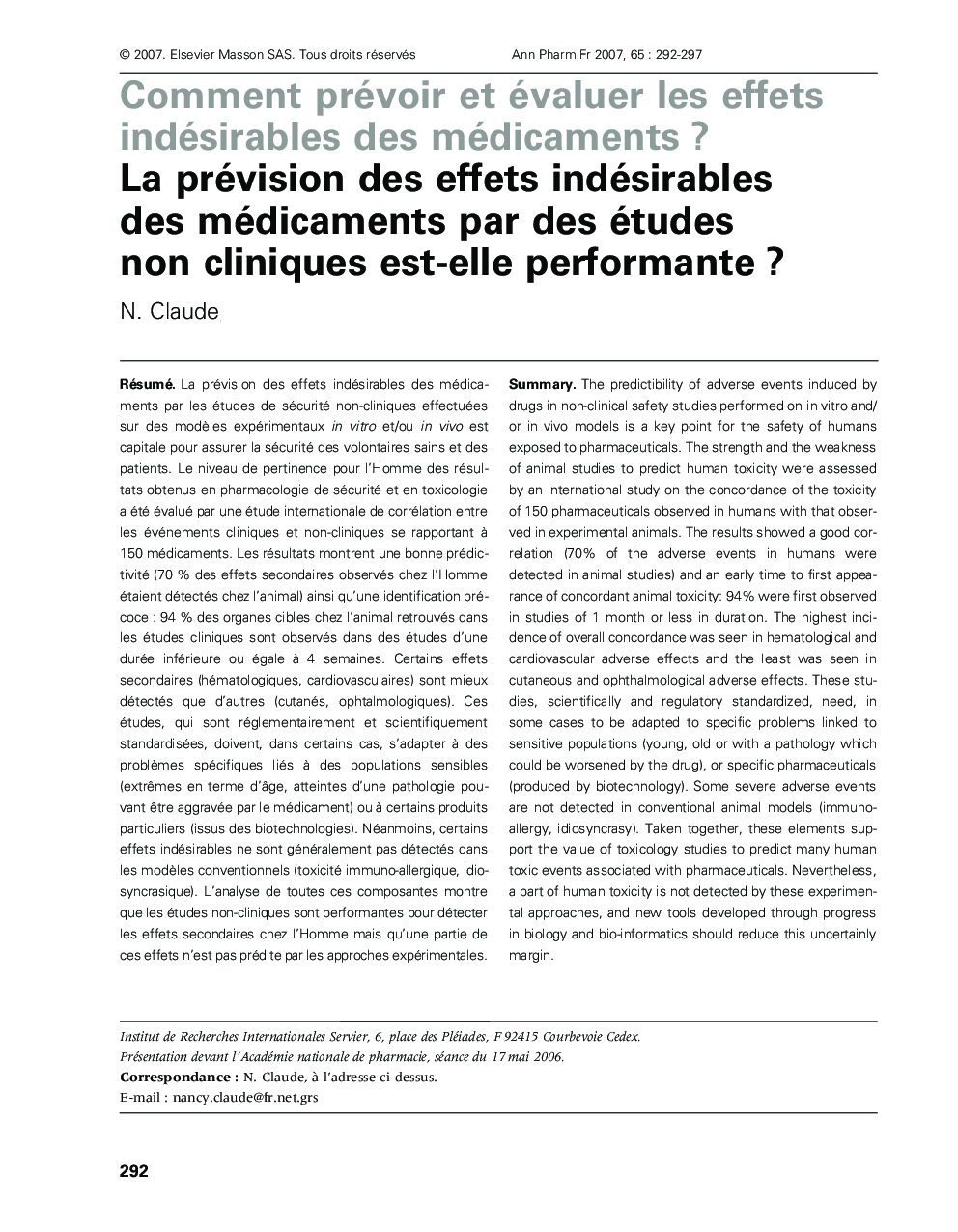| Article ID | Journal | Published Year | Pages | File Type |
|---|---|---|---|---|
| 2478291 | Annales Pharmaceutiques Françaises | 2007 | 6 Pages |
Abstract
The predictibility of adverse events induced by drugs in non-clinical safety studies performed on in vitro and/or in vivo models is a key point for the safety of humans exposed to pharmaceuticals. The strength and the weakness of animal studies to predict human toxicity were assessed by an international study on the concordance of the toxicity of 150 pharmaceuticals observed in humans with that observed in experimental animals. The results showed a good correlation (70% of the adverse events in humans were detected in animal studies) and an early time to first appearance of concordant animal toxicity: 94% were first observed in studies of 1 month or less in duration. The highest incidence of overall concordance was seen in hematological and cardiovascular adverse effects and the least was seen in cutaneous and ophthalmological adverse effects. These studies, scientifically and regulatory standardized, need, in some cases to be adapted to specific problems linked to sensitive populations (young, old or with a pathology which could be worsened by the drug), or specific pharmaceuticals (produced by biotechnology). Some severe adverse events are not detected in conventional animal models (immuno-allergy, idiosyncrasy). Taken together, these elements support the value of toxicology studies to predict many human toxic events associated with pharmaceuticals. Nevertheless, a part of human toxicity is not detected by these experimental approaches, and new tools developed through progress in biology and bio-informatics should reduce this uncertainly margin.
Keywords
Related Topics
Health Sciences
Pharmacology, Toxicology and Pharmaceutical Science
Drug Discovery
Authors
N. Claude,
